What is the Moroccan Khanjar and Its Cultural Significance?
The Moroccan Khanjar, also known as the Koummya or Koumaya, is a traditional dagger rich in heritage and symbolism. Originating from Morocco, it is closely associated with the Berber culture, particularly the Chleuh people of the Atlas Mountains. Unlike a modern utility knife, this dagger is a cultural artifact, representing elegance, social standing, and identity. Traditionally, it is worn as part of ceremonial attire, hanging prominently on the left side, its scabbard tip facing forward. The intricate designs and regional craftsmanship tell stories of tribal traditions and the influence of Arabic Jambiya-style daggers.
Key Highlights:
- Cultural representation of the Berbers in Morocco.
- Reflects elegance and social belonging.
- Inspired by the Arabic Jambiya family of daggers.
What Materials Are Used in This Handcrafted Dagger?
This Moroccan dagger is a blend of artisanal craftsmanship and durable materials. The blade is crafted from stainless steel, offering a decorative yet sturdy profile. The hilt and scabbard incorporate wood, providing a natural, rustic finish. The metal parts feature intricate silver engraving, showcasing traditional Berber motifs. These handcrafted details lend each piece a unique charm, reflecting its handmade nature. Imperfections are part of its authenticity and not defects.
Key Highlights:
- Stainless steel blade for longevity and display.
- Wooden hilt and scabbard for a traditional aesthetic.
- Silver engravings with intricate Berber designs.
How Does the Size Enhance Its Usability and Display Value?
The dimensions of the Moroccan Khanjar make it a versatile item, whether as a collectible or a decorative piece. The blade measures 6.90 inches, with a spine thickness of 0.12 inches, making it lightweight and manageable. The total length of 15 inches ensures it makes a bold statement when displayed. Its size is neither too cumbersome for personal use nor too small to lose its impact as a centerpiece in home decor or exhibitions.
Key Highlights:
- Total length: 15 inches for prominence in display.
- Blade size and thickness offer balance for decorative purposes.
- Ideal for collectors and cultural enthusiasts.
What Unique Features Make It a Collector’s Item?
The Moroccan Khanjar stands out due to its handcrafted nature and cultural heritage. Each piece carries unique imperfections, a testament to its handmade origin. Unlike factory-produced items, no two daggers are identical, adding value for collectors. The intricate silver engravings and cultural significance enhance its desirability among enthusiasts of ethnic artifacts and Moroccan decor.
Key Highlights:
- Handmade, ensuring each piece is one-of-a-kind.
- Intricate silver engravings showcase Berber craftsmanship.
- High cultural and historical value for collectors.
Why Are Handmade Imperfections Part of Its Charm?
Handcrafted products like this Moroccan Khanjar bear imperfections that tell a story of authenticity and human touch. The slight variations in design and finish distinguish it from mass-produced replicas. Any visible rust or irregularities in the blade are not flaws but a characteristic of its traditional production methods. These imperfections are embraced as part of its artistic and cultural identity.
Key Highlights:
- Imperfections reflect traditional craftsmanship.
- Rust or marks add to its authenticity.
- Emphasizes the beauty of non-factory production.
How Does Its Connection to the Arabic Jambiya Enhance Its Value?
As a derivative of the Arabic Jambiya, the Moroccan Khanjar belongs to a renowned family of daggers with historical significance across the Arabian Peninsula. This lineage adds depth to its value, merging Moroccan traditions with wider cultural influences. The fusion of Arabic and Berber elements in the dagger’s design highlights its place as both a practical tool and a ceremonial object.
Key Highlights:
- Part of the historical Jambiya family of daggers.
- Fusion of Moroccan and Arabic cultural influences.
- Represents a broader tradition of elegance and heritage.
How Does It Serve as a Functional Decorative Piece?
While the Moroccan Khanjar is primarily decorative, its design incorporates functional elements. The stainless steel blade and robust construction ensure durability. Displayed on walls, shelves, or as part of a ceremonial outfit, it adds an exotic and historical touch to any setting. Its lightweight build makes it easy to handle or mount.
Key Highlights:
- Dual purpose: functional and decorative.
- Lightweight for easy handling and display.
- Complements traditional and modern decor themes.
How Does Its Design Reflect Berber Elegance?
The dagger’s intricate silver engravings and the harmonious blend of materials epitomize Berber artistry. The flowing lines and geometric patterns on the hilt and scabbard are inspired by traditional Moroccan motifs. These details transform the Khanjar from a mere tool into a statement piece, reflecting the sophistication of Berber design philosophy.
Key Highlights:
- Intricate silver engravings with Moroccan motifs.
- Reflects Berber sophistication and cultural artistry.
- A fine balance of functionality and elegance.
What Should Buyers Know About Its Maintenance?
Proper care can preserve the beauty and durability of the Moroccan Khanjar. Occasional cleaning of the stainless steel blade prevents rust, while the wooden parts can be polished to maintain their natural luster. It is recommended to store the dagger in a dry environment to avoid excessive moisture exposure.
Key Highlights:
- Clean blade periodically to prevent rust.
- Polish wood for lasting shine.
- Store in a dry environment for longevity.
How Does It Enhance Moroccan-Themed Interiors?
The Moroccan Khanjar is more than a collectible; it is a statement piece for Moroccan-themed decor. Its unique blend of materials, intricate engravings, and cultural significance make it a perfect addition to traditional or eclectic interiors. Displayed in living rooms, offices, or art spaces, it sparks conversations and adds an exotic charm.
Key Highlights:
- Ideal for Moroccan-inspired home decor.
- Adds cultural richness to interior designs.
- Blends seamlessly with traditional or modern aesthetics.

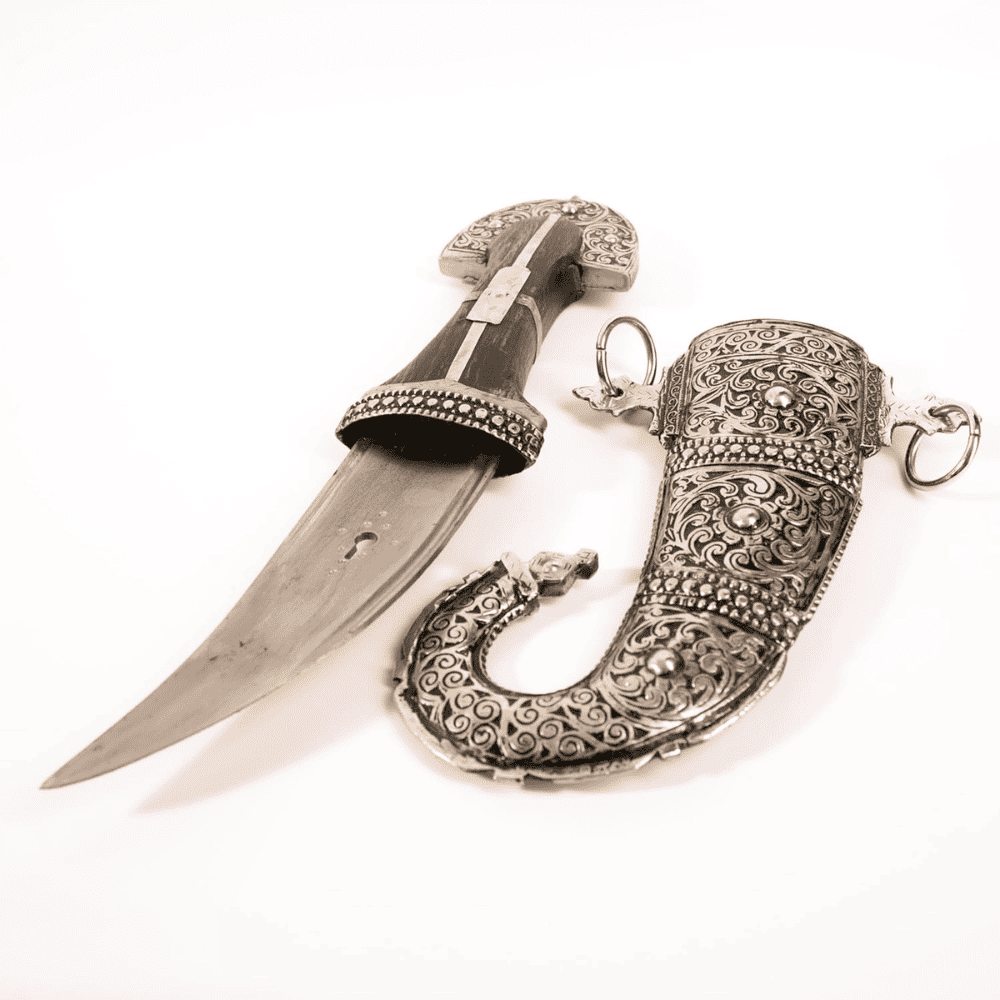

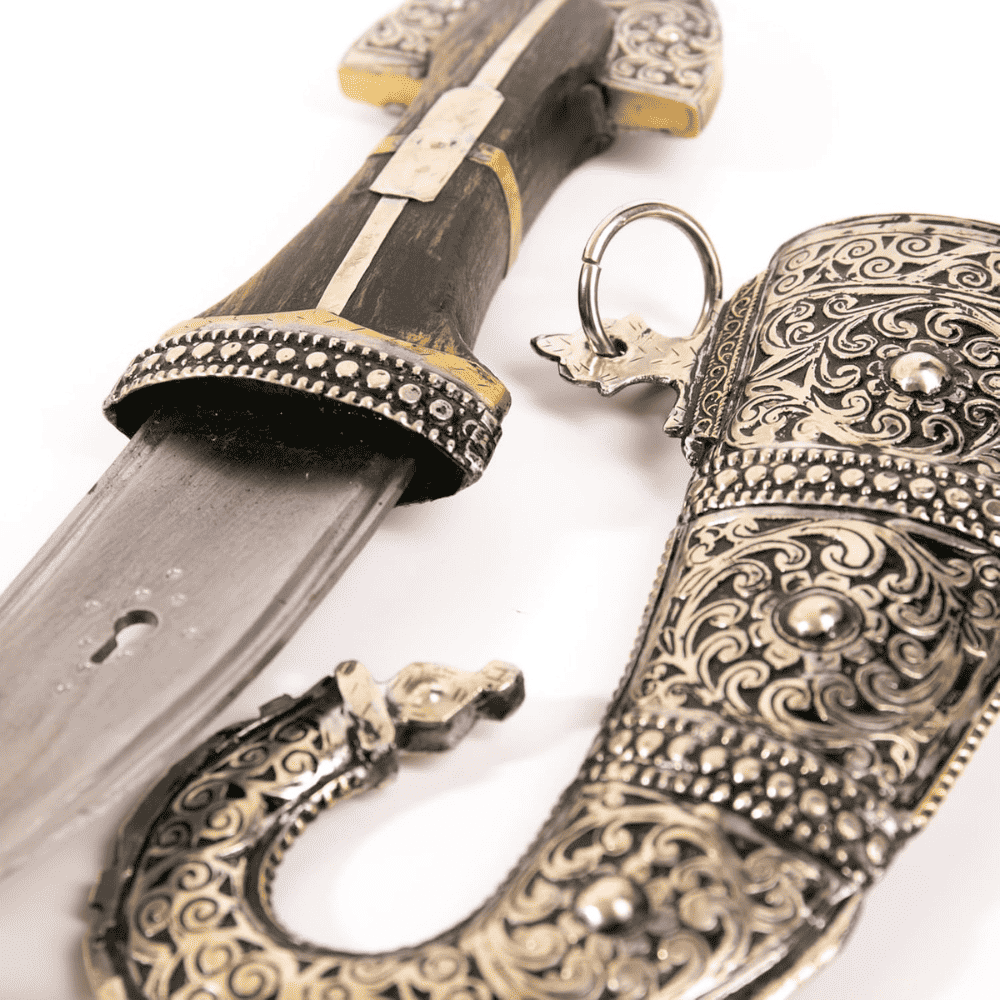
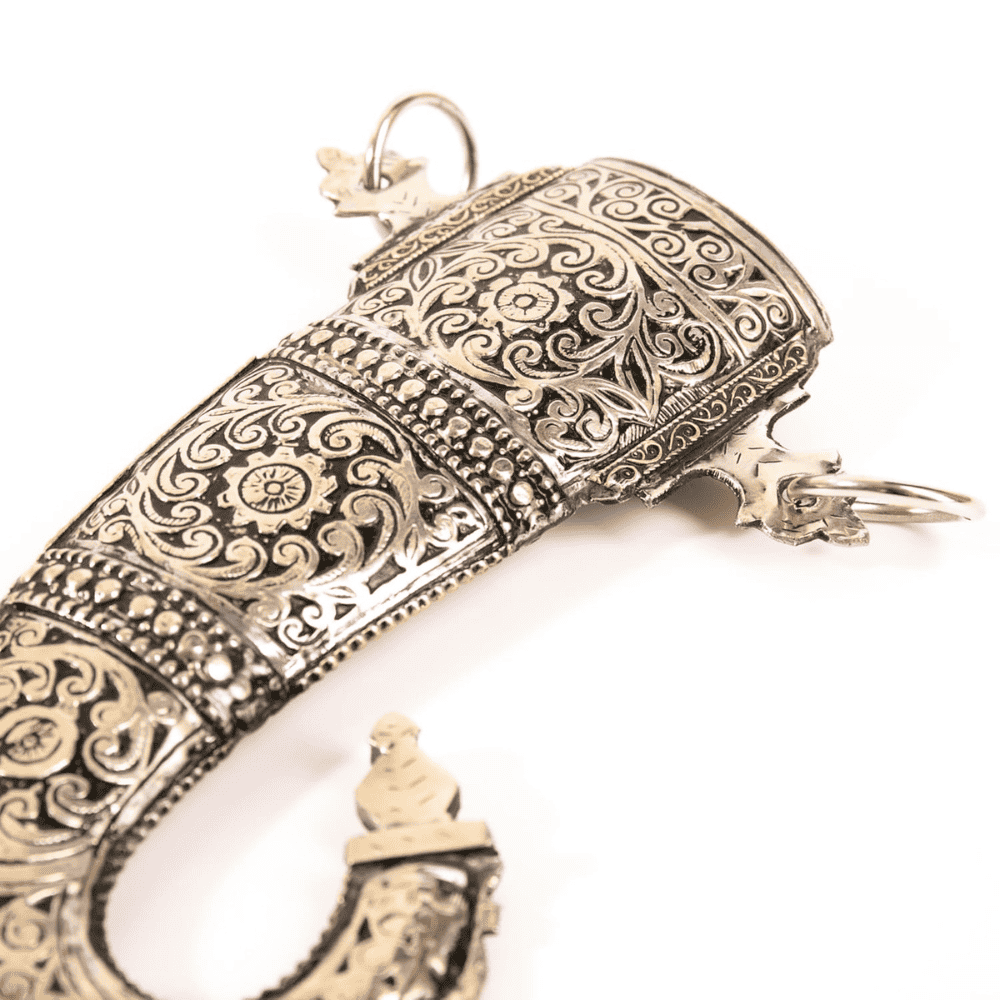
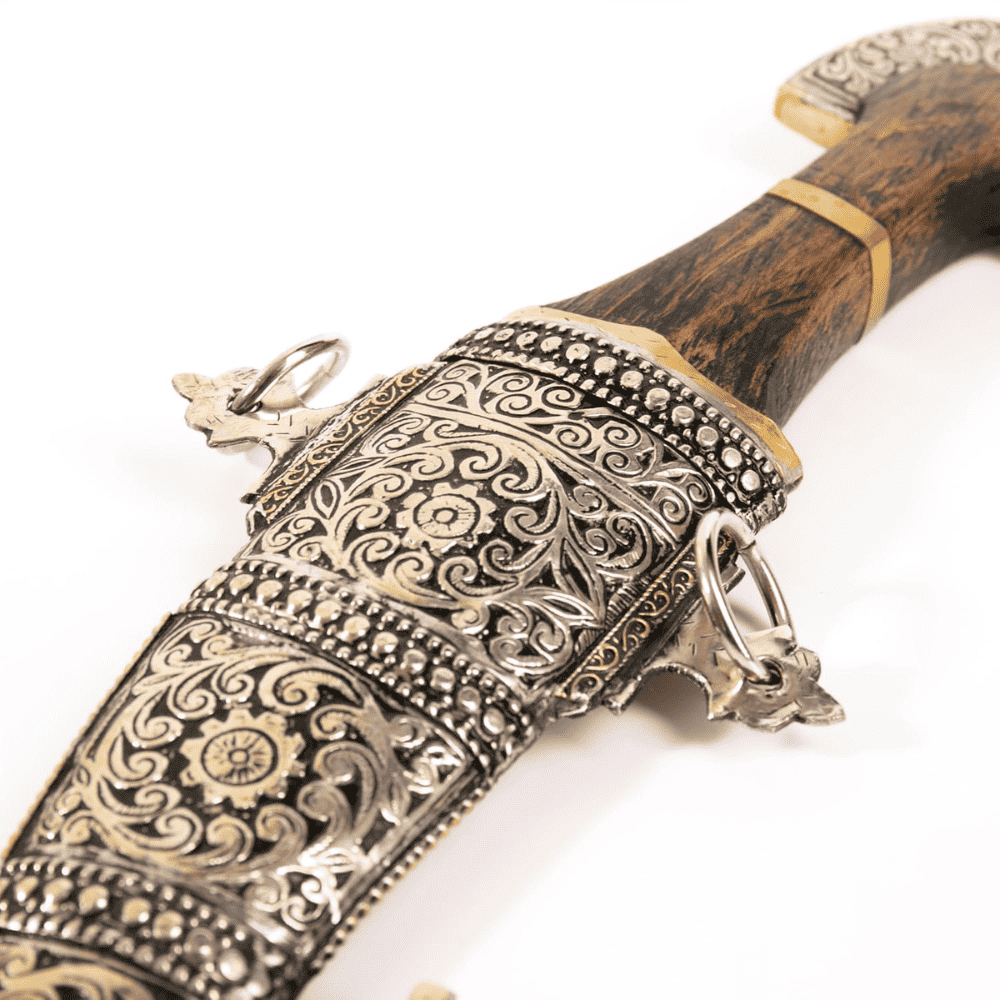
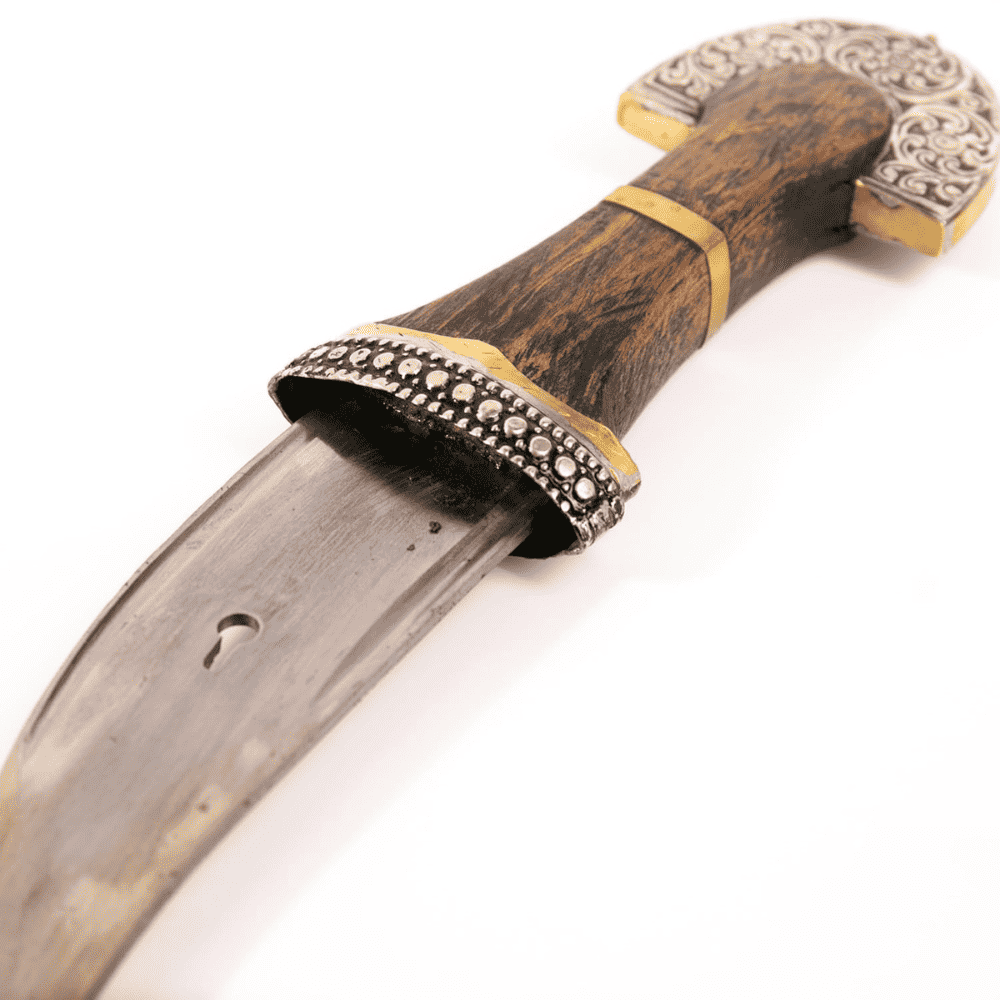
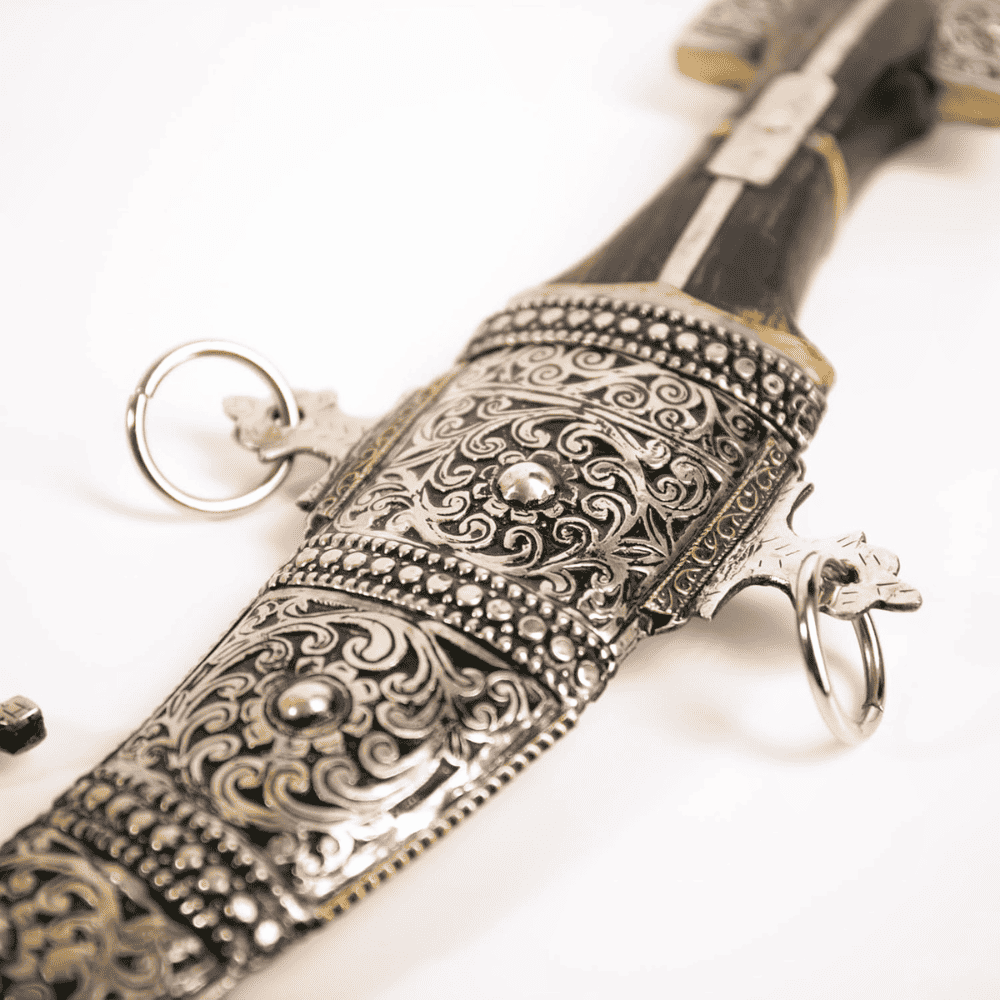
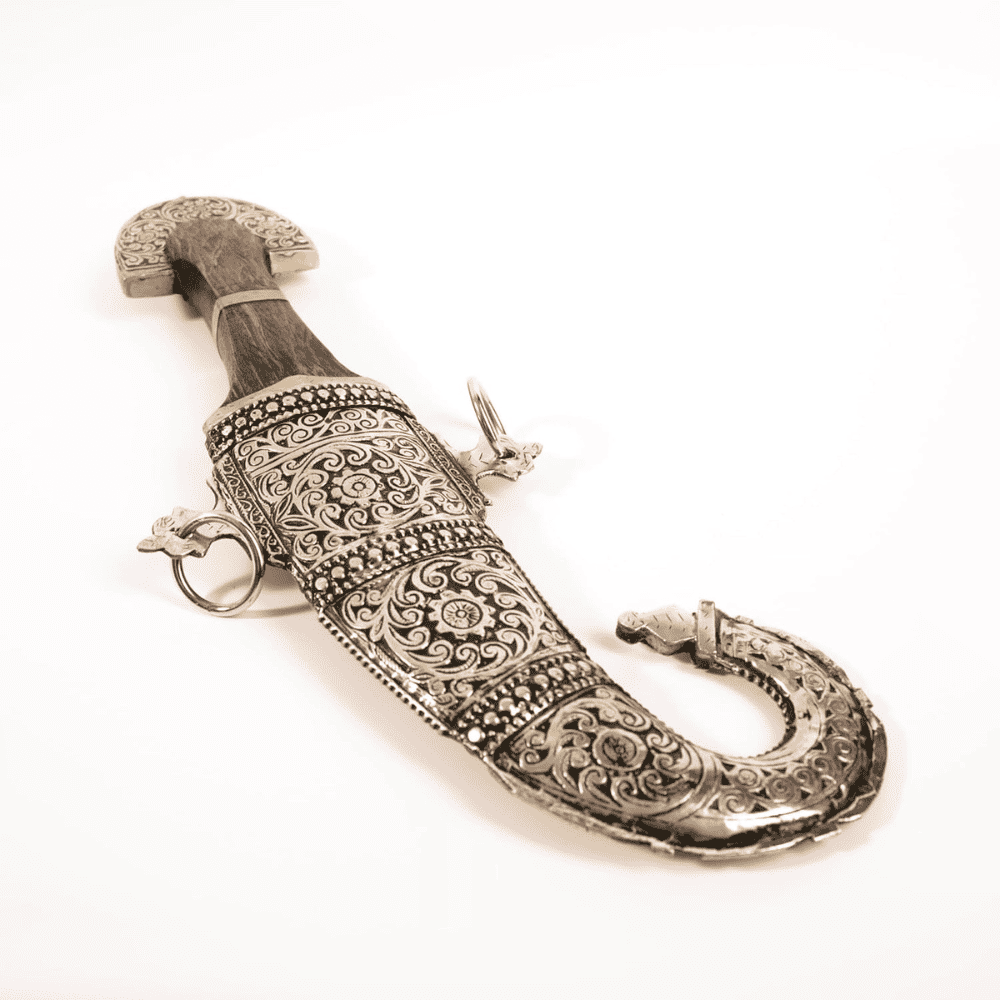





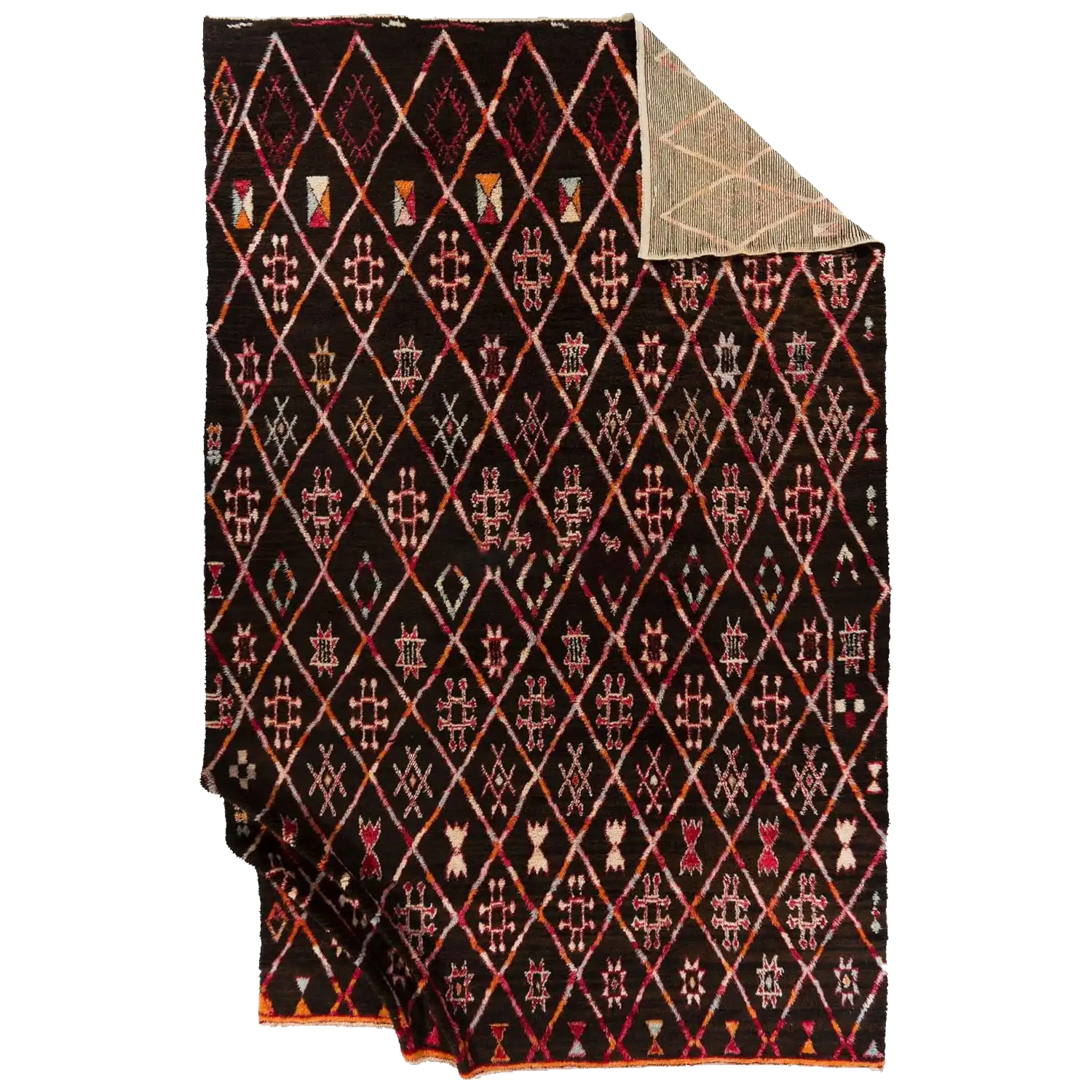
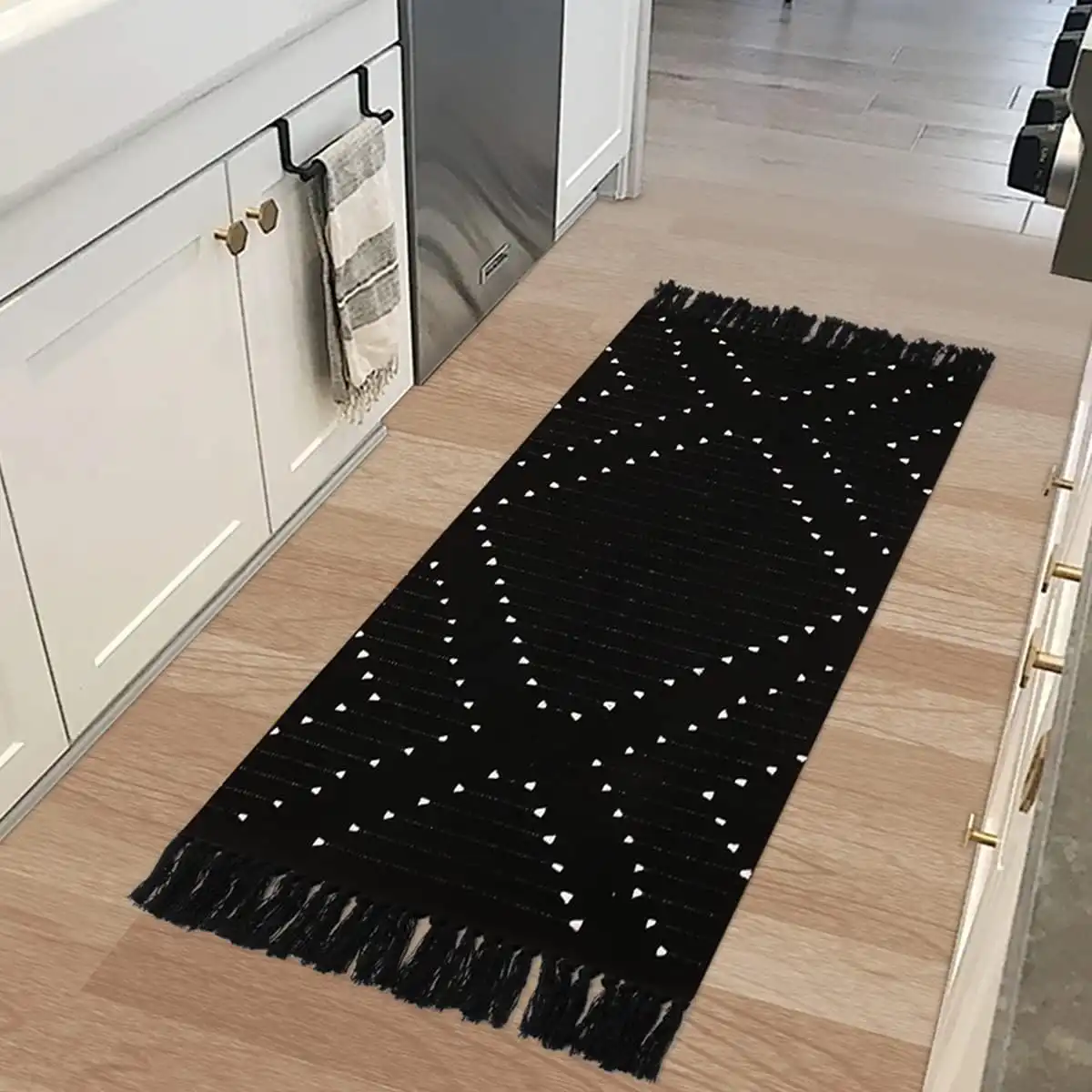
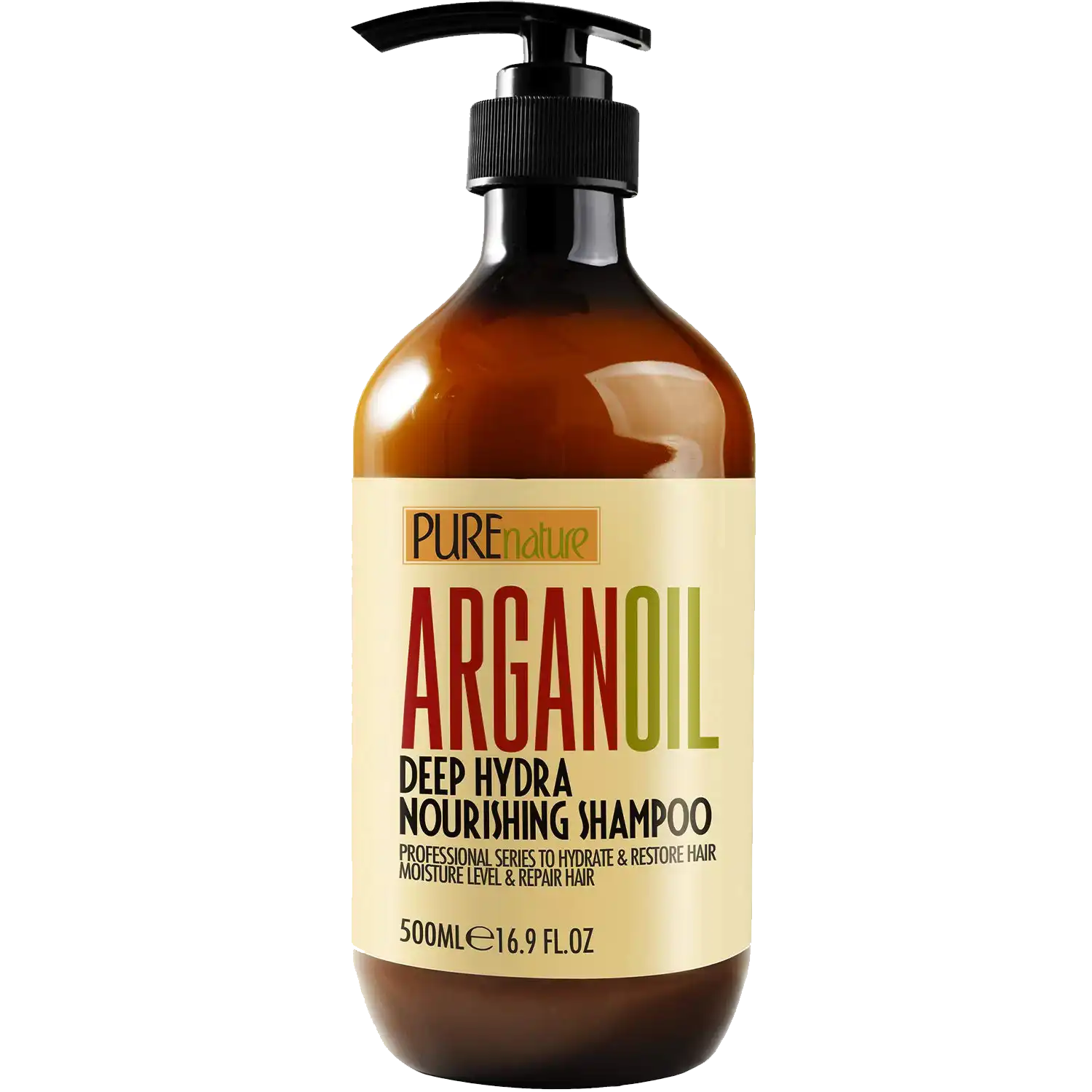
Reviews
There are no reviews yet.